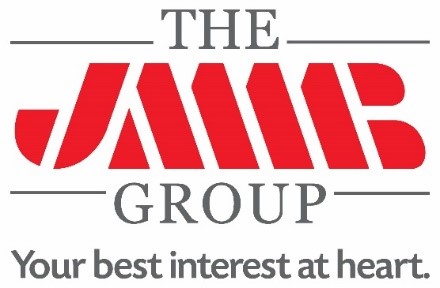The passage of Hurricane Sandy which resulted in total damage and losses estimated at $1.5 billion, combined with the slower than anticipated recovery of the global economy, impacted the overall performance of the Jamaican economy for the October to December 2012 period. Real GDP contracted by 0.6 per cent, resulting from a decline of 2.7 per cent in the Goods Producing Industry, as the Services Industries remained flat. This assessment was made by the Planning Institute of Jamaica’s (PIOJ) Acting Director General, Mr. Everton McFarlane, at the Institute’s quarterly press briefing today, Thursday, February 21, 2013. Details were provided on the performance of the economy for the 3rd quarter of the fiscal year as well as an update on the indicators of well-being and progress that track Jamaica’s achievements towards Vision 2030 Jamaica.
Within the Goods Producing Industry, all industries registered declines — Agriculture (down 4.5 per cent); Mining & Quarrying (down 11.0 per cent); Construction (down 1.5 per cent); and Manufacture (down 0.1 per cent). Within the Services Industry, Finance & Insurance Services registered an increase of 1.0 per cent, along with Wholesale & Retail Trade, Repair & Installation of Machinery (up 0.4 per cent) and Other Services (up 0.2 per cent). Transport Storage & Communication remained flat while all other industries recorded declines.
Mr. McFarlane noted that there were declines in the Employed Labour Force. The total employed labour force fell by 700 persons to reach 1 088 200 compared with October 2011; and by 6 500 persons compared with July 2012. The unemployment rate increased to 13.7 per cent, up by 0.9 percentage point compared with the corresponding period in 2011.
For the January–March 2013 period, it is expected that there will be recovery in most industries with GDP growth projected to fall within the range of 0.0% to 1.0%.
Governance, Social and Environment Indicators
Under the Vision 2030 Jamaica-National Development Plan framework, two areas—Labour Force Quality and Security Status—were examined. Under Labour Force Quality, 23.7 per cent of the total labour force had vocational or professional certification, based on the quarterly labour force surveys for 2012. This represents an increase of 0.5 percentage point compared with 23.2 per cent in 2011.
With respect to Major Crimes, the overall downward trend in crime rates that began in June 2010 continued; 386 major crimes per 100 000 population were committed in 2012, from 394 per 100,000 population in 2011. The murder rate for 2012 was 40 per 100 000 population, down 4.1 per cent compared with 2011. This represents the third consecutive year in which both rates have declined.
The Planning Institute of Jamaica’s Review of Economic Performance, October – December 2012 Media Brief February 21, 2013 – Presentation Notes
Overview
Today we are reporting that real Gross Domestic Product (GDP) in the Jamaican economy contracted by an estimated 0.6 per cent in the October to December 2012 quarter compared to the corresponding quarter of 2011.This is consistent with the movements recorded in key demand and supply side indicators such as:
Sharp declines in credit to the private sector in real terms and in the flow of Loans & Advances from Commercial Banks; and
A US$4.7 million decline in the imports of Raw Materials/Intermediate Goods for October 2012 to US$292.6 million.
The out-turn for the October to December 2012 period largely reflected the impact of:
• A weak global economic environment on the main export industries;
• continued weak domestic demand conditions, perhaps heavily influenced by weak business confidence; and
• adverse weather-related conditions, specifically
1. the prolonged effect of drought conditions which prevailed during June and July 2012, and which affected productivity of short-gestation crops (less than a year); and
2. damage and losses caused by Hurricane Sandy in October 2012.
SETTING THE RECORD STRAIGHT – THE IMPORTANCE OF THE GOVERNMENT’s GROWTH STRATEGY
In light of the weak economic performance during the last four quarters, the Government is resolute in implementing strategies to facilitate sustained real GDP growth over the medium to long term. The foundations of this growth agenda are elaborated in the PIOJ’s Growth Inducement Strategy (GIS), which we have outlined at previous press briefings, at various other public forums, and which can be found on the home page of our web site [http://www.pioj.gov.jm/].
Significant elements of this overall strategy have been captured in the Government’s policy agenda being negotiated with the International Monetary Fund. Specifically, the Government’s Medium-Term growth agenda is driven by:
• Macroeconomic Stability: time bound fiscal consolidation, supported by fundamental fiscal and monetary policy reforms, to foster a stable, predictable and resilient macroeconomic environment conducive to high levels of long term foreign and domestic investment
• Microeconomic reforms: time bound structural reforms aimed at significantly strengthening Jamaica’s external competitiveness and generating higher levels of factor productivity;
• Strategic investment facilitation: catalytic and strategic private/public investments; and
• Social sector reform and targeted social protection initiatives to maintain and enhance social stability.
Let us look at each of these a little more, in turn:
1. Fiscal consolidation – this is to be achieved through (a) active and enhanced debt management operations such as the National Debt Exchange (b) comprehensive tax reform to improve efficiency, equity and revenue adequacy, (c) expenditure control, including wage restraint and improved mechanisms for fiscal accountability such as further strengthening of the Fiscal Responsibility Framework and the enhancement of fiscal rules, and (d) public sector rationalization.
2. Structural reforms – these are initiatives to improve critical elements of the business environment, including: (a) establishing a Secured Transactions Framework to facilitate improved access to credit through the inclusion of movable property as allowable forms of collateral (b) introducing a dedicated Commercial Court to reduce the transactions costs of commercial dispute resolution (c) reforming the legislative framework dealing with insolvencies so as to allow orderly, timely and ultimately less costly resolution of distressed companies (d) streamlining the Business registration process through the use of multi-purpose registration instruments, (e) implementing the Port Community System – an IT platform and related business processes to electronically integrate and streamline export and import procedures, and (f) energy sector reforms to progressively and significantly reduce the cost of energy and enhance energy efficiency in use.
3. Strategic private/public investments – fiscal consolidation and structural reforms will be complemented by catalytic and strategic private/public investments (and by a significant increase in MSME-financing wholesaled through the Development Bank of Jamaica). The strategic investment push will focus to a large extent, though not exclusively, on key growth poles such as logistics, shipping, tourism, agriculture, and business process outsourcing, as well as public investments to strengthen the resilience of the country to natural disasters through Climate Change Adaptation and Disaster Risk Reduction initiatives and targeted public infrastructure projects.
Notably, the strategic investments being actively facilitated by the Government include initiatives to partner with the private sector to:
(a) Establish Jamaica as a logistics hub—including expanding port, cargo and maritime facilities and economic zones. This initiative will involve the phased roll-out of several components targeted to be completed by 2015, including the development of the Caymanas Economic Zone, expansion (and privatisation) of the Kingston Container Terminal, and the privatisation and upgrading of the Norman Manley International Airport.
(b) Establish nine Agro Parks to help to stabilise the agricultural supply chain, deepen inter-industry linkages, increase competitive import substitution and activate unutilised rural land and labour. The parks, funded partly by the European Union, are to be complemented by improved inputs, including irrigation, transport infrastructure, and technical services.
(c) Accelerated development of facilities for “ready–to–use” ICT activities, which is expected to act as an important shock absorber for displaced semi- and highly skilled workers in the short to medium term.
4. Social stability – To help cushion the adverse impact of the fiscal consolidation programme on the most vulnerable as well as to ensure that growth is broad based and inclusive, the Government has placed emphasis on social protection through the reform of key social spending initiatives with a view to enhance the targeting and efficiency of social services. In addition, the Government is committed to establishing and maintaining a floor on social spending, that is, a minimum annual expenditure on specified social protection initiatives and programmes. These programmes include conditional cash transfers to children and the elderly; youth employment programmes; the poor relief programme; the school feeding programme and the basic school subsidy; provision of assistance for persons with disabilities; and targeted components of primary health care.
Within the context of the economic policy programme currently being negotiated with the International Monetary Fund (IMF), all of the strategies previously mentioned are elaborated in terms of time-bound benchmarks – in essence, an action plan for stability and growth over the medium term that can be monitored and evaluated. Apart from the established reporting and oversight arrangements within the public sector, the Honourable Minister of Finance and Planning has also indicated the establishment of joint public – private – civic society oversight arrangement specifically for the purpose of monitoring progress under the IMF programme.
A final point on the growth strategy – the growth strategy framework outlined above (and the specific time bound actions necessary to implement the strategies) is only one aspect of the Government’s comprehensive development policy agenda. A key aspect of the Government’s economic development programme is the new Medium Term Socio-Economic Policy Framework (MTF) 2012-2015, which has been developed through repeated and iterative consultation with stakeholders in all sectors. The MTF presents an integrated development framework for inclusive growth and sustainable development in the medium term.
The MTF is fully aligned with the Growth-Inducement Strategy and the country’s Medium Term Economic Programme, and includes the main features of the macroeconomic programme reflected in the recently concluded Staff-Level Agreement with the IMF. The new MTF 2012-2015, with the Medium Term Economic Programme and new 5-year public sector investment programme, will form a consistent and coherent national development planning, budgeting and implementation framework to guide the consolidation of the country’s economic position and the transition to inclusive and sustainable growth.
I turn now to the usual discussion of recent economic performance, beginning with an update on labour market developments.
Employment Update….
Based on the Labour Force Survey undertaken by the Statistical Institute of Jamaica (STATIN) for the month of October 2012, the unemployment rate was 13.7 per cent. This was 0.9 percentage point higher than the rates recorded for both July 2012 (the preceding LFS survey) and for October 2011. The higher unemployment rate relative to the corresponding period of 2011 reflects both an increase in the size of the labour force and a decline in the number of persons employed. Jamaica’s Labour Force for October 2012 comprised 1 261 100 persons, an increase of 12 600 persons compared with October 2011.
However, the total number of employed persons as at October 2012 stood at 1 088 200, a decline of 700 persons relative to October 2011. An examination of the employed labour force by industry group revealed six of the sixteen industry groups recorded lower employment levels. The largest declines in employment levels were recorded in:
• Construction (down 12 100 persons)
• Wholesale & Retail, Repair of Motor Vehicle & Equipment (down 8 700 persons); and
• Manufacturing (down 6 400 persons);
These declines were partially mitigated by higher employment levels in Agriculture, Hunting, Forestry & Fishing (up 9 400 persons) and Hotels & Restaurant Services (up 5 300 persons).
Let me now turn to a more detailed reporting on Jamaica’s production performance during the October – December 2012 quarter …
Developments in the Goods-Producing Industry
The Goods-Producing Industry contracted by 2.7 per cent with all industries registering declines in real value added during the review quarter. This performance largely reflected the impact of adverse weather-related conditions; a decline in investor confidence; as well as the impact of the sluggish global economy on Jamaica’s major export industries such as Mining and Manufacturing.
Agriculture
The Agriculture, Forestry & Fishing industry contracted by an estimated 4.5% representing the first quarterly decline since October – December 2010, when the industry was severely impacted by Tropical Storm Nicole. During the review quarter Traditional Export crops fell by 16.1% and Other Agricultural Crops declined by 5.5%. However, increases were recorded for Animal Farming up 4.6 per cent and Post Harvest activities up 2.7 per cent.
The downturn in the industry reflected:
• Adverse weather-related conditions in some of the major agriculture producing parishes, in particular:
o The protracted impact of drought conditions which existed during June and July, and;
o Hurricane Sandy during October.
Mining & Quarrying
Real Value Added for Mining & Quarrying declined by 11.0%, largely reflecting reduced demand from one of Jamaica’s main export markets (North America). This resulted from the relatively low prices prevailing on the international market, which curtailed demand for alumina from Jamaica, due to the comparatively high cost of production locally.
Total bauxite production decreased by 10.7% reflecting Alumina production down 11.6%. Average capacity utilization rate at alumina refineries fell to 38.8% which was 4.9 percentage points lower than in the corresponding period of 2011. Crude bauxite production declined by 3.9% due to a 6.1 percentage points decline in the bauxite capacity utilization rate.
Manufacture
Real Value Added for the Manufacture industry declined by an estimated 0.1%, evidenced by the downturn in key demand side indicators referred to earlier (sharp declines in credit to the private sector and the flow of Loans & Advances from Commercial Banks). The decline was due largely to Food, Beverages & Tobacco (down 0.2%), as Other Manufacture remained flat.
With respect to Food, Beverages and Tobacco, contractions were recorded for Beverages and Tobacco component stemming from declines in Rum & Alcohol (down 17.7%) and Beer & Stout down 23.3%. These declines were tempered by increased production of Sugar (up 59.4%) and Molasses (39.5) in the Food Processing component.
In the Other Manufacture category declines were recorded for the Non-metallic minerals component due to a 16.7% decline in Cement production; and the Chemicals & Chemical products component due to a fall-off in Fertilizer (down 47.5%) and Aluminium Sulphate (down 60.3%). Increases were however recorded in the production of some petroleum products.
Construction
Real Value Added for the Construction industry declined by 1.5%, reflecting a contraction in Building Construction due to a slowing in residential and non-residential construction projects. This was evidenced by Housing Starts, down 72.3%; and Housing Completions down 14.8%.
Additionally, the Other Construction component is also estimated to have contracted reflecting lower Capital Expenditure by:
• NWA, down 2.7% to $6.35 billion
• Telecommunications, down 10.9% to $642.0 million.
The downturn in Construction was consistent with employment levels in the industry which fell by 12 100 persons in October 2012 relative October 2011.
Developments in the Services Industry
The out-turn for the Services Industry was estimated to be flat reflecting real value added declines in four industries which was mitigated mainly by an improvement in the Wholesale & Retail Trade; Repair & Installation of Machinery (WRTRIM) Industry and the Finance & Insurance Services industries.
Electricity & Water
The Electricity & Water industry recorded a decline in real value added of 2.2%, reflecting lower electricity generation and water production.
Gross Electricity generation declined by 2.5% due to a decline of 12.9% in JPSCo generation, which was partially mitigated by an increase of 19.7% in Non-JPSCo generation. The decline in JPSCo generation was due to plant downtimes associated with the impact of Hurricane Sandy during the quarter. Line Losses & Unaccounted for Net Generation increased by 5.5 per cent to 257.2 Million kilowatt hours.
Water production fell by 0.2% reflecting a decline of 5.6% in the Western division and an increase of 3.1% in the Eastern division.
Transport, Storage & Communication
Real value added for Transport, Storage & Communication was estimated to be flat. This performance was due to a decline in external and domestic demand as well as the impact of Hurricane Sandy on travel, which was counter-balanced by an estimated growth in the Telecommunications sub-industry.
Maritime cargo volume decreased by 6.2% to 3.8 million tonnes reflecting declines at the Port of Kingston, down 2.7% to 1.2 million tonnes and at Outports, down 7.7%. The decline at Outports was driven largely by the fall-off in Bauxite & Alumina exports.
Airport activities were estimated to have declined reflecting a contraction of 2.5% in Total air passenger movements. This was due to Air passenger movements at Norman Manley International Airport and Sangster International Airport, down by 5.0% and 1.3% respectively.
The Telecommunications component is estimated to have grown, largely reflecting the impact of lower call rates which facilitated an estimated increase in minutes sold.
Finance & Insurance
Real value added for the Finance & Insurance industry was estimated to have grown by 1.0% during the quarter, due largely to increases in net interest income on the stock of loans at deposit taking institutions and Fees and Commission income.
The stock of Loans & Advances Outstanding at Commercial Banks amounted to $307.5 billion, an increase of 15.6% compared with the end of December 2011. Of this amount, credit to the private sector accounted for $282.2 billion, representing an increase of 16.0%.
WRTRIM
Real Value Added in the Wholesale & Retail Trade; Repair & Installation of Machinery (WRTRIM) industry grew by 0.4% due to increased expenditure associated with preparation activities for Hurricane Sandy, which was evidenced by higher values of ABM & Point-of-Sale transactions; and higher stock of loans for personal consumption.
Higher sales were recorded for four of the nine categories which accounted for 47.0 per cent of total sales. These were:
Minerals, Fuels, Lubricants & Petroleum Products up 8.6%
Hardware, Buildings Supplies & Electrical Goods, up 15.9%
Chemicals, Pharmaceuticals, and Cosmetics, up 9.0%
Furniture, Furnishings, Office Equipment & Jewellery, up 30.1%
Hotels & Restaurants
Real Value Added for Hotels & Restaurants fell by 1.3% influenced mainly by the impact of Super Storm Sandy and weak economic conditions in Jamaica’s main source markets, the USA and Europe. Total arrivals declined by 6.7% reflecting Stopover arrivals, down 1.8%; and Cruise passenger arrivals, down 12.8%.
Visitor expenditure is estimated to have declined by 3.3% to US$454.3 million.
GDP Performance: Calendar Year 2012
For 2012, real GDP is estimated to have declined by 0.3%. The Goods Producing Industry declined by 1.2%, while the Services Industry contracted by 0.1%. The industries which recorded the largest declines during the year were Mining & Quarrying (down 9.3%); Construction (down 3.4%) and Transport, Storage & Communication (down 2.1%). The main sources of growth were recorded in Agriculture (up 2.9 %) and Hotels & Restaurants (up 1.5%).
OUTLOOK
With regards to January – March 2013 the Jamaican economy is expected to record weak growth. Most industries with the exception of Hotels & Restaurants and Producers of Government Services are expected to record positive performances. This is predicated on a general recovery from the subdued performance recorded in January – March 2012. Notably, the drag on growth from the Mining sector would be substantially eased during the January to March 2013 quarter, despite the decline in total bauxite production for January 2013. However, growth in the domestic economy will be tempered by the continued weak performance in the global economy.
In light of the above-mentioned factors, we expect real GDP for the January – March 2013 quarter to grow within the range of 0.0% to 1.0%.
Real GDP for the fiscal year 2012/2013 is projected to fall within the range of -0.5% to 0.0%.
Preliminary data for January 2013
We have preliminary data for Inflation, Electricity, Tourism and Mining for January 2013, as follows:
Inflation
The rate of inflation for January 2013 was 0.7% largely reflecting higher prices for Food & Non-Alcoholic Beverages, up 0.8% due to:
• higher prices for Starchy Foods up 2.3%; Milk, Cheese & Eggs up 1.3%; Bread & Cereals up 0.7%
Electricity
Total electricity generation for January 2013 increased by 2.2% to 344.7 Million kilowatt hours. Total electricity sales grew by 3.9% to 251.6 Million kilowatt hours.
Tourism
Preliminary data on the Tourism industry indicates that Airport arrivals for January 2013 declined by 3.2%. Cruise-ship arrivals increased by 8.9%.
Mining & Quarrying
For January 2013, total bauxite production declined by 10.2% due to declines in both Alumina and Crude Bauxite of 8.2% and 5.7% respectively.
Total Bauxite exports contracted by 10.5% due to declines in Crude Bauxite and Alumina exports of 7.7% and 6.7%, respectively.
Vision 2030 Jamaica: Dashboard of Indicators
We will now turn to an update on the social well-being and progress indicators. The reporting areas covered under the National Dashboard of Indicators for this quarterly briefing show improvements in two indicators. Mr. Richard Lumsden will provide the details…..
Quarterly Press Briefing
October to December 2012
Vision 2030 Jamaica Report
Under the Vision 2030 Jamaica – National Development Plan framework, we are reporting on key indicators of national well-being for this quarterly press briefing under two reporting areas—Labour Force Quality and Security Status. An overview of performance shows continued improvement in both areas.
Under Labour Force Quality, 23.7 per cent of the total labour force had vocational or professional certification based on the quarterly labour force surveys for 2012. This represents an increase of 0.5 percentage point compared to 23.2 per cent with vocational or professional certification in 2011.
With respect to Major Crimes (murder, shooting, rape, carnal abuse/sexual intercourse against a child under the age of 16, robbery, break-ins and larceny), 386 major crimes per 100,000 population were committed in 2012, a decline of 2.0 per cent from 394 per 100,000 population in 2011. The murder rate for 2012 was 40 per 100,000 population, down 4.1 per cent from the murder rate of 42 per 100,000 population in 2011.
These figures for 2012 continue the overall downward trend in crime rates that began in June of 2010, and represent the third consecutive year in which both rates have declined.
This concludes the reporting on key indicators of national well-being for this quarterly press briefing.

 Businessuite News24 International2 years ago
Businessuite News24 International2 years ago
 Feedback & What You Think2 years ago
Feedback & What You Think2 years ago
 Marketing & Advertising2 years ago
Marketing & Advertising2 years ago
 Businessuite Women1 year ago
Businessuite Women1 year ago
 Businessuite 50 Power and Influence1 year ago
Businessuite 50 Power and Influence1 year ago
 Leadership Conversations1 year ago
Leadership Conversations1 year ago
 Businessuite Markets2 years ago
Businessuite Markets2 years ago
 RANKING7 months ago
RANKING7 months ago







